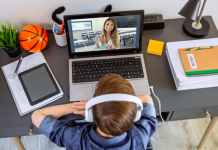In 2018, Tara Westover arrived on the literary scene with a huge splash with the publication of her book, Educated, a memoir about her struggle to attain education while growing up in a strict survivalist household. With particular poignance, she lays out the purpose of education as such in the book: “An education is not so much about making a living as making a person.”
Maintaining the balance between providing students with the tools to excel in their chosen professions, and helping them develop and explore their personalities has always been a challenging tightrope act for teachers, administrators and education policymakers. Unfortunately, they are not usually successful; the emphasis is often much heavier on the former rather than the latter, and the majority of education systems across the world largely produce careerist individuals who have little time or concern to spare for anything outside of their work lives.
Enter, the Pandemic
The Covid-19 pandemic has without a doubt made a heavy impact in the field of education. Schools were among the first institutions to be shut down worldwide in a bid to protect children from the virus. While online learning was already trending before the pandemic and its accompanying lockdowns, it saw a sharp rise from early 2020 onwards simply due to sheer necessity.
Several tech solutions were arrived at to facilitate this shift to online learning. However, there hasn’t really been much innovation in the methods of delivery of education and knowledge. Studying online mainly consists of either watching pre-recorded videos of lectures and reading the accompanying notes, or being present in virtual classrooms. With the former option students end up feeling cheated. It allows them to have a very flexible daily schedule, but essentially amounts to self-study. It is equated to learning stuff off of YouTube, which could even be a better option since it’s free.
Meanwhile, virtual classrooms have not proven to be any better. If anything, they are worse, connectivity issues being the least of their problems. Each student is in a completely different environment with its own very real distractions. And these distractions often intrude into the virtual classroom, disrupting it for everyone. Teachers are caught between mandating that students turn off their audio/video in order to minimize these disruptions, and requiring them to do the exact opposite to ensure that they are in fact attending class. Adding to this, teacher-student interactions become a bit of a challenge in the virtual environment, with overlapping chatter and generally problematic communication. Instances of all these problems and more have been exhaustively documented on the internet, as they provide raw material for ironically funny TikToks and Instagram Reels.
While many have rushed to proclaim online education as the future of learning, it has not really found much favour with students or educators.
Career vs. Personal Growth vs. Lockdown
This new entirely screen-based learning mode has definitely impacted both goals of education mentioned earlier: careers and developing individual personalities. However, the imbalance persists and has arguably been deepened.
Skills needed to make a living can still be taught online through the two methods. Their efficacy and quality can be debated, but they remain viable solutions to that problem. However, neither of these methods offers a feasible solution to the question of developing students’ personalities. They in fact exacerbate the problem that existed in in-person learning, as now there is little to no chance of meaningful interactions between the students and teachers, and among the students themselves. Effective questioning and conversations are removed in online education. Students remain isolated in front of their screens with the world at their keyboards, but without the kind of contact so dearly needed for them to grow and develop personally.
Post Pandemic
Online education is not, however, all bad. It helps bridge the gap of accessibility for some students. Research also shows that online courses help students remain studying for longer, successfully reducing dropout rates in higher education. Concurrently, this research also demonstrates that online learning can be very effective for specific types of courses.
Thus, this opens up the option for mixed models of learning post pandemic, when physical distancing will no longer be needed and educational institutions can be reopened. Mixed learning could also address the imbalance in education. By relegating some of the skill training to the online arena, it could boost the aspect of personal growth during in-person classes.
Alan is an online STEM tutor, teaching K-12 students. His love for interdisciplinary education and everyday psychology has prompted him to start blogging. You can check out his blog and follow him on Twitter.
Looking forward to hearing from you.






